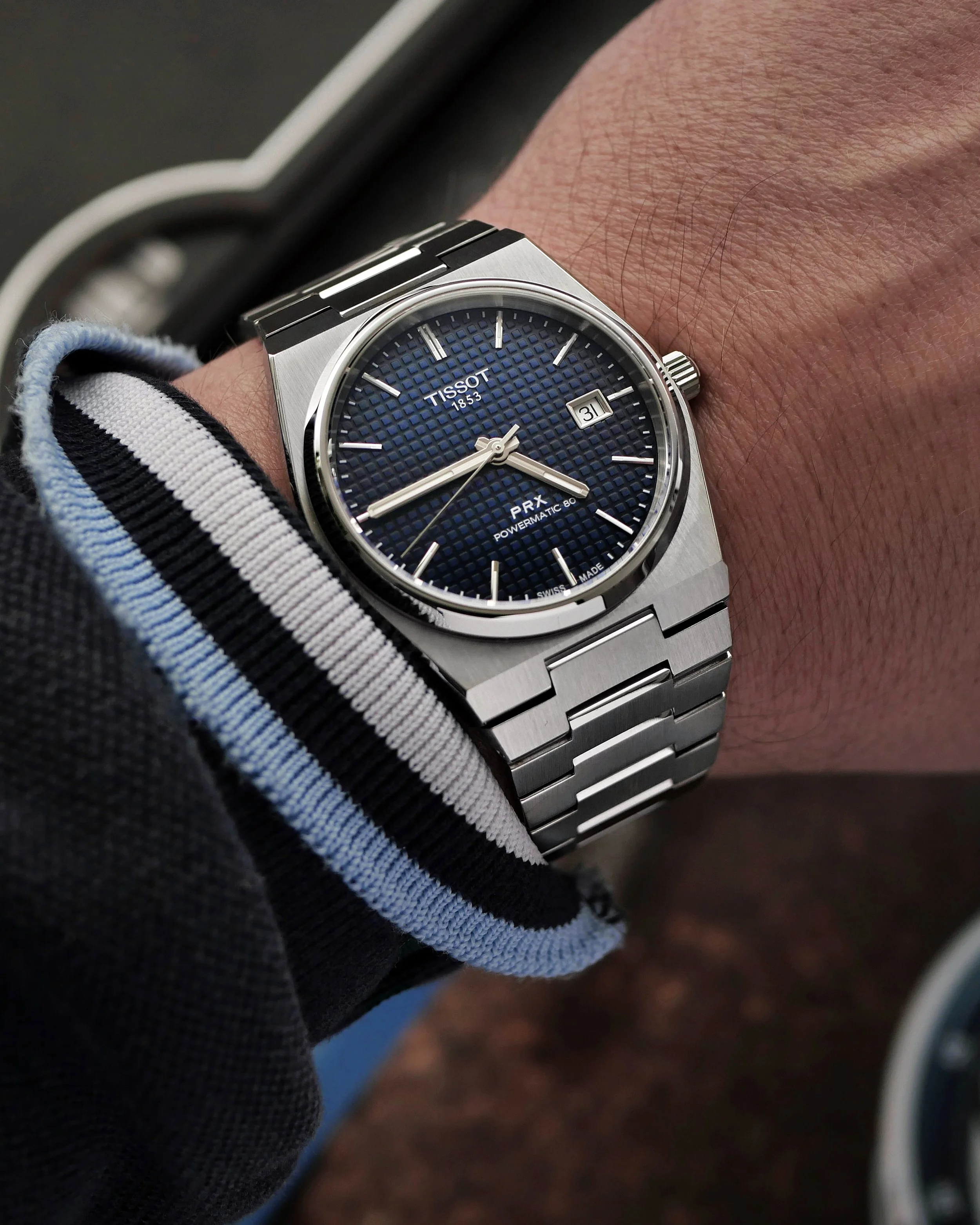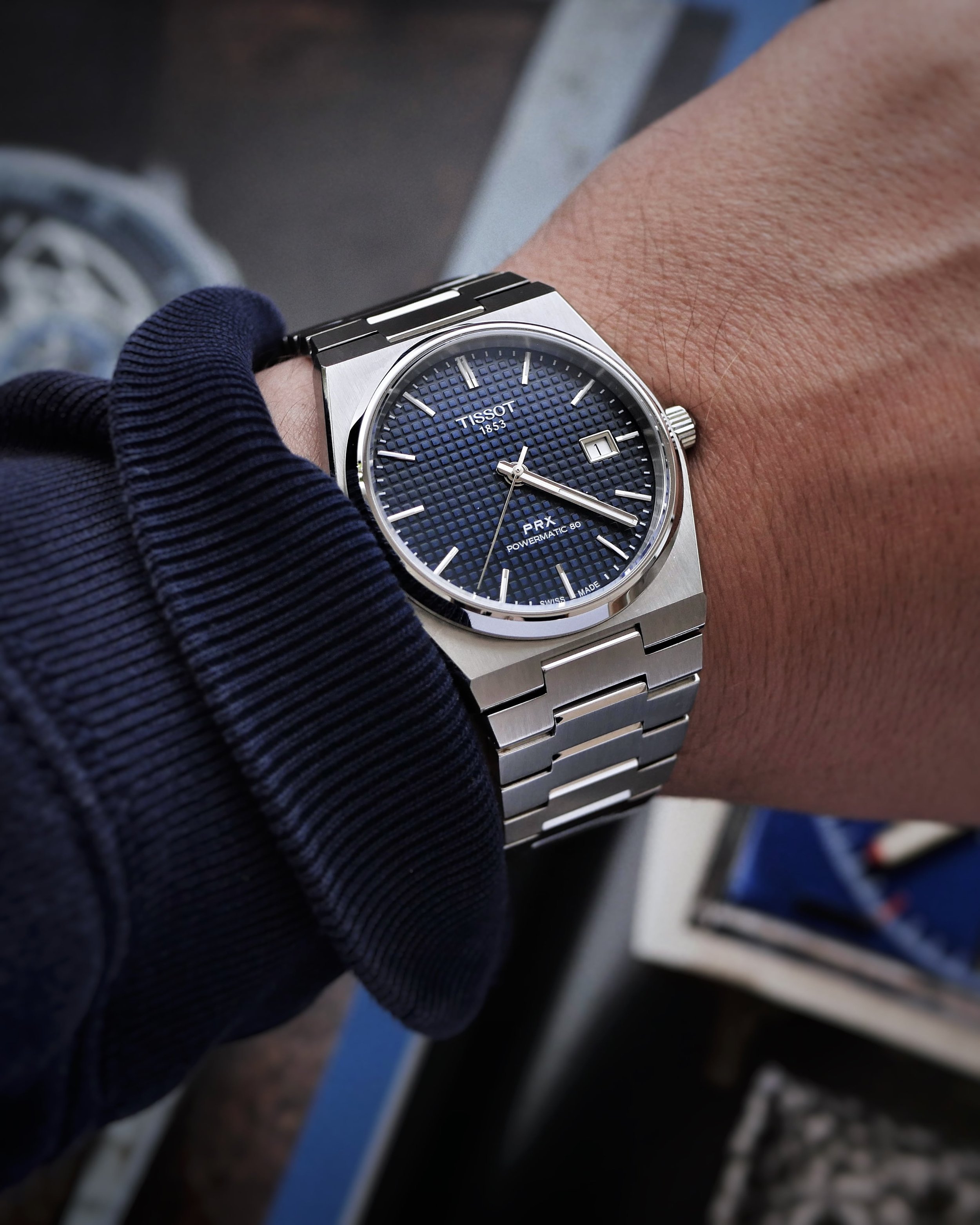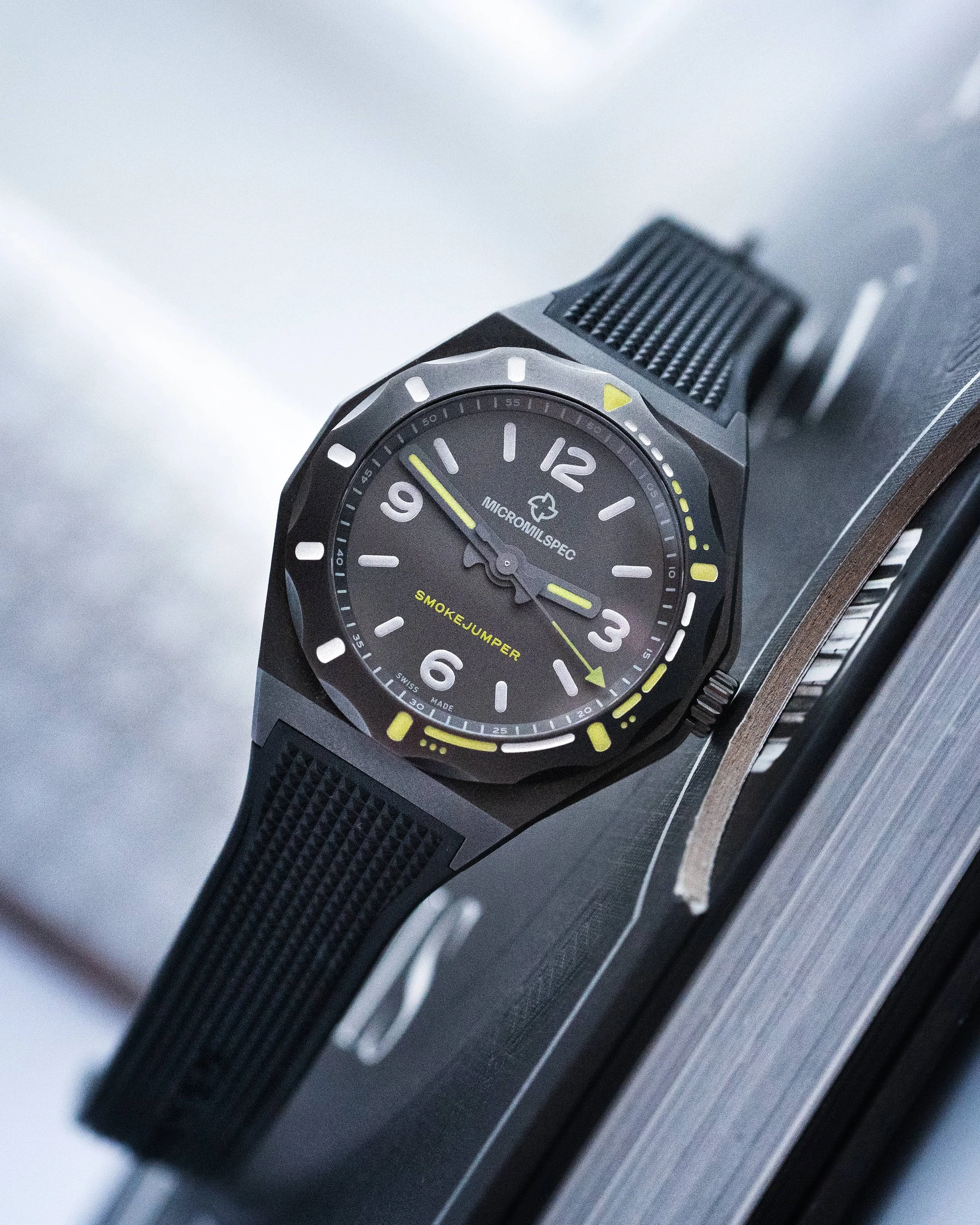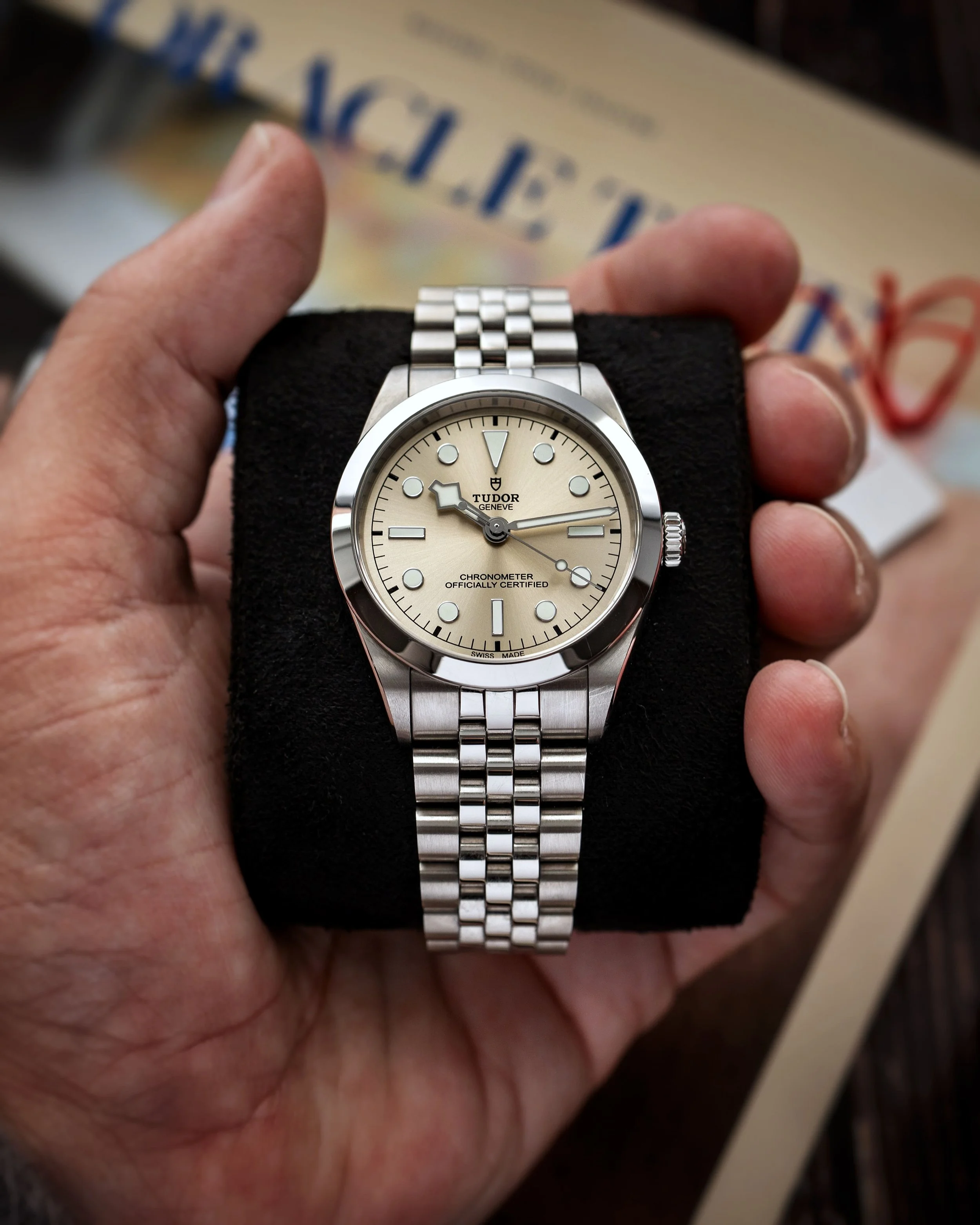Hands on: Tissot PRX Powermatic 80
This article may contain affiliate links which means if you choose to purchase a product using the link, I may get a small commission. This is at no extra cost to you and enables me to keep writing reviews of watches and products I genuinely think you will enjoy or find useful.
When Tissot first showcased their modern version of the PRX, I was instantly a fan! From the images, it looks like they had brought back what was a 70s icon from the brand with those fantastic sharp lines, a thin profile and what looked to be good finishing, and rumour had it it was going to be competitively priced. I didn’t get to see one of these original quartz versions in steel till some time after the release, and I was immediately impressed with the quality at the price point. So why didn’t I buy one? Well, I’m a bit of a confessed strap geek and the whole integration of the bracelet, if I’m honest, was something I couldn’t quite get over. As much as I knew I liked the look, I just wasn’t sure if it would be something I would connect with if I didn’t have some sort of option to swap out the bracelet if the mood took me.
Fast forward, and sometime later, Tissot expanded the PRX lineup with the PRX Powermatic 80. This was essentially the same overall design, but that slim 70s-style case now had an automatic movement and display case back and a stunning deep blue waffle pattern dial. Those two changes, along with what I think is a very reasonable RRP of £565.00 here in the UK, made this version too good to resist. Yes, I was still unsure how I would feel with an integrated bracelet, but I’d also heard that both Tissot and some third parties were working on leather and rubber strap options for the watch, so I felt confident in giving this one a try!
As it turned out, my wife noticed my interest in the Powermatic 80 version of the PRX and purchased one for my birthday. So, after five months of living with the PRX and weeks of wrist time spent with it, I felt it was time to share my thoughts on it.
First of all, let’s start with the basics. The PRX Powermatic 80 is unashamedly 70s in its design and style and harks back to Tissot's late 70s original design. Although not identical, the style is unmistakable and, for me, was a massive factor in the attractiveness of the watch. That slim profile and lack of lugs give the PRX lineup a very clean and simple look. At 40mm, this is also a very wearable watch. The finish on the case is a mix of fine vertical brushing and a high-polish fixed bezel.
The dial on the Powermatic 80 version of the PRX shares the same slim markers and handset with its quartz brother. Still, where the quartz version uses a very lovely blue sunburst dial, the Powermatic 80 version uses a very nice deep blue waffle pattern dial. Both, in my opinion, are very nicely done, but the waffle pattern on the Powermatic 80 version I have feels like a step up and adds a beautiful depth and texture to the dial, making it feel a little more premium. Turn the case over, and you're greeted with a view of the Powermatic 80 movement through the display case back. Again, this is something not available in the original PRX quartz model, so something to bear in mind if this is something you're looking for.
Finishing off the case is a very nicely knurled crown with a signed Tissot T present, and the crystal on both the Powermatic 80 and Quartz models is sapphire, so scratch resistance is going to be high. Both crystals are flat, which means the very slight difference in case thickness (0.5mm) between the Powermatic 80 version being the thicker of the two is down to that automatic movement or probably, in more likelihood, the display case back enabling you to view it. Overall, on the wrist, the difference in thickness is negligible, and the overall finish on both versions, notwithstanding the difference in dial finish, is outstanding at their respective price points.
This quality is carried through into that integrated bracelet I was unsure about. A fine brushed finish to the top of the links and a finely polished bevel to each link and polished sides make this a stunning bracelet on the wrist! The articulation is good, thanks to the top bevel on each link and the bracelet fastened with a nice butterfly clasp, again signed with Tissot 1853, an excellent detail. Tissot quotes overall lug to lug as 39.50, but as with most integrated style bracelets, this isn’t accurate because those first links are effectively fixed extensions of the case. When I measured the actual lug-to-lug distance, as it would matter to real folks like you and me, that measurement came out at 51mm, so quite the difference and something to bear in mind if your wrists are on the slimmer side.
So, having tried both the quartz model and then buying and spending time with the Powermatic 80 version, what are my final thoughts? And did I make the right decision on which version to buy? Overall, I can’t fault the PRX in either guise because, aside from a couple of details, they are essentially so similar I don’t think you can go wrong with either model. They offer fantastic finishing at the price, sapphire crystals, and a design that looks like it should cost a great deal more. From a practical point of view, they both also offer 100m of water resistance, which is always reassuring.
So, the decision on which version to choose for me really came down to the dial finish. Yes, this also ties into the movement used, and the Powermatic 80 is a genuinely good movement from my experience. It’s been accurate, and the 80-hour power reserve would definitely benefit some people, I have no doubt. But for me, I would have happily purchased the quartz version had it had the waffle dial. The original PRX from 78 was quartz, and I see no issue with that! You may prefer the blue sunburst dial, which is also incredible to look at, and if that’s the case, then you're also saving a couple of hundred in the cost of the watch! Winner! So, for me, I made the right decision, but I couldn’t argue with anyone who went with the quartz version either. They are both superb!
Anything I don’t like? Nothing is perfect, but I’d be remiss if I didn’t call out the frankly useless lume. Nighttime visibility is not a strong point, and that’s down to the very slim and delicate markers and handset. It is hard to complain too much as, in all honesty, this isn’t a watch designed for late-night mountain hikes or deep dark sea diving, but still something to note if that is important to you. Secondly, I have to return to that lug to lug (51mm) and say, please try and get hands-on with one if this measurement matters to you. The appeal of this watch is definitely the style and way it should be worn on the wrist, and that lug-to-lug could spoil that for some people if it does, though all hope is not lost as Tissot now does a smaller 35mm version of the PRX!
My initial hesitation had been the integrated bracelet, and at the time, no other options were available. This has also now been rectified by Tissot, who offer leather straps, and other third parties are also now starting to produce rubber and leather straps to fit the PRX line too! I’ll be testing some of these out soon and think this will make the PRX line an even more appealing option when I reach for a watch each day.
In conclusion, Tissot has resurrected a 70s icon and turned it into a range of watches that offer superb value that everyone can enjoy! The PRX definitely deserves serious consideration if you love that ‘70s style.
Looking for a rubber strap option? Then check out my store here.
Specifications
Case: 316L Stainless steel 40mm, display case back
Crystal: Sapphire crystal with antireflective coating
Movement: Powermatic 80, Automatic with 80 hours of power reserve
Dial: Waffle texture finish
Strap: Stainless Steel with push button butterfly clasp











